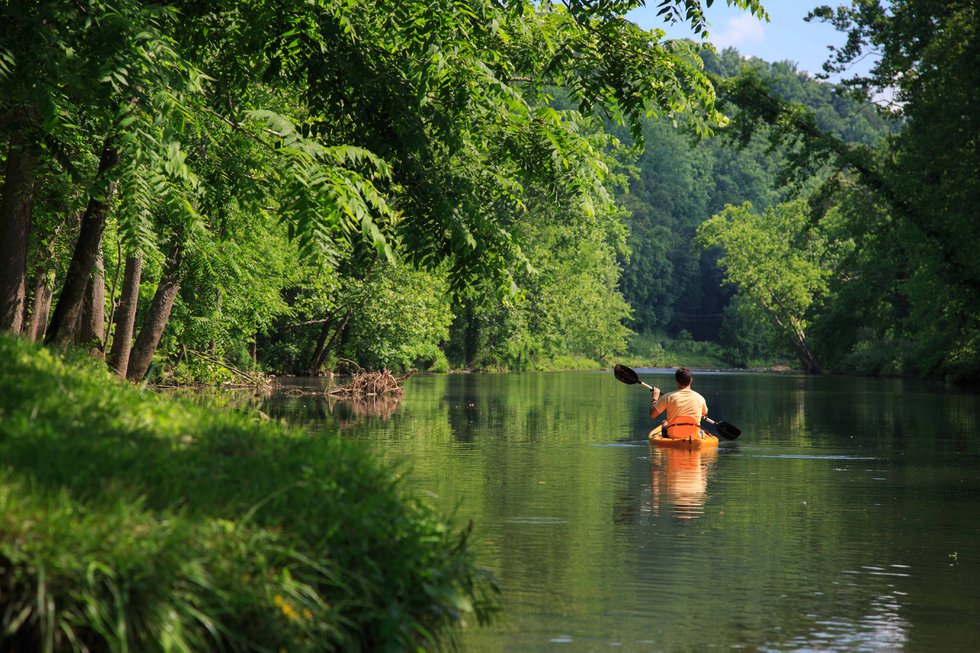From Lisbon’s sleek palace hotels and cobblestone streets to the Algarve region’s charming coastal villages, a visit to this sun-splashed country promises fascinating food, architecture, art and people.

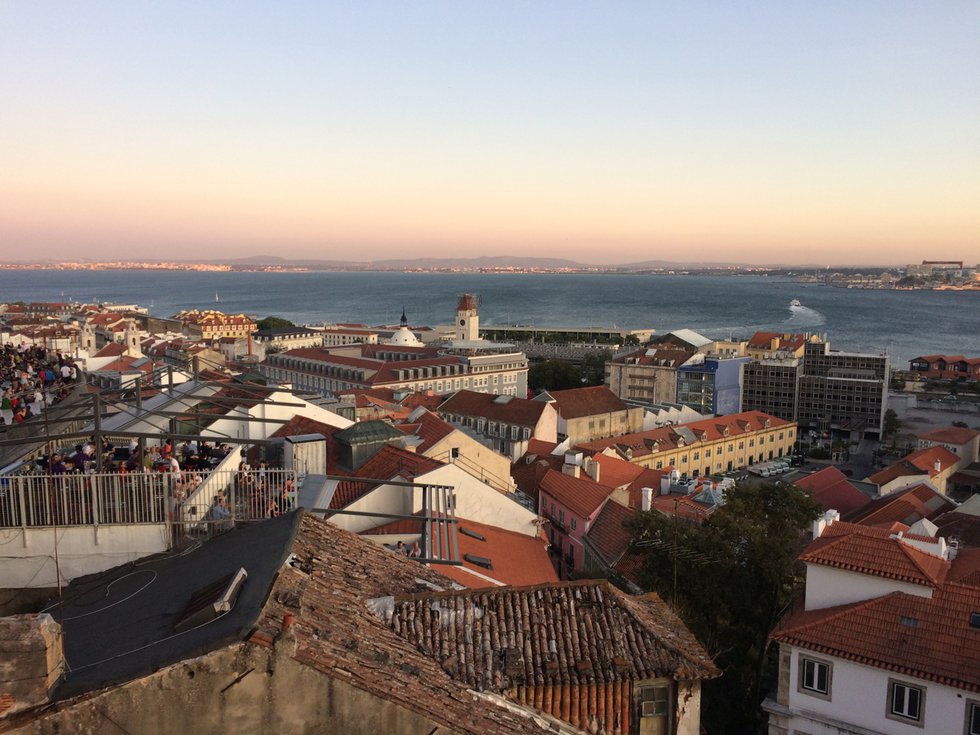
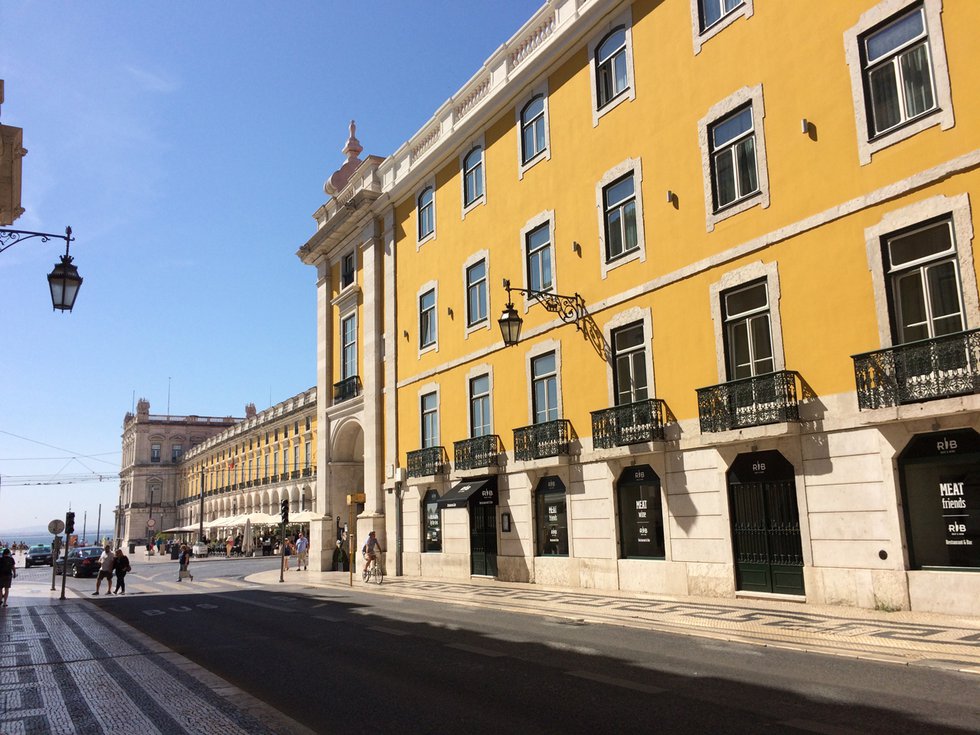

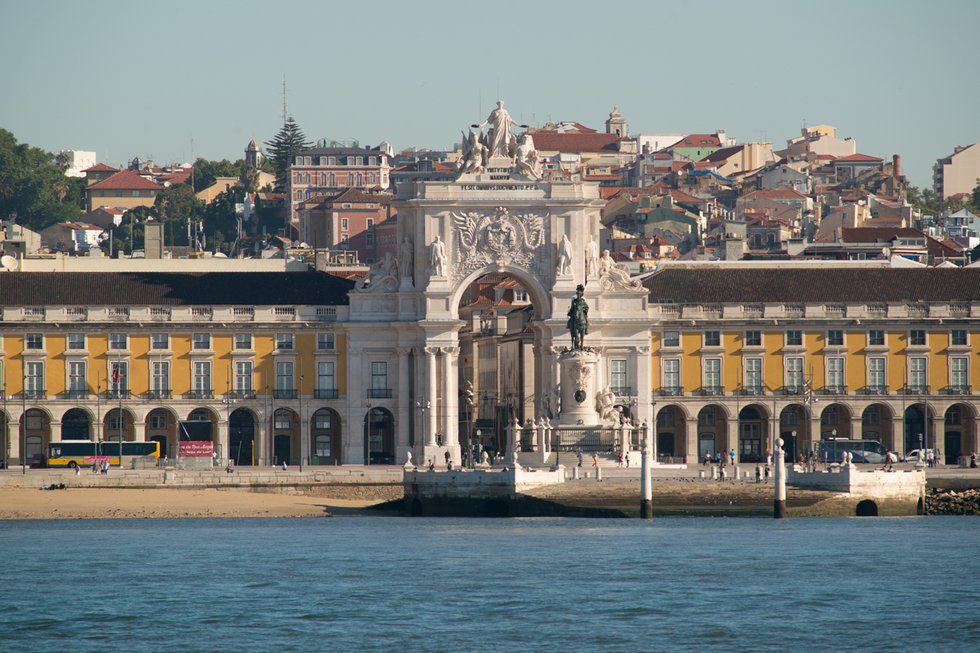
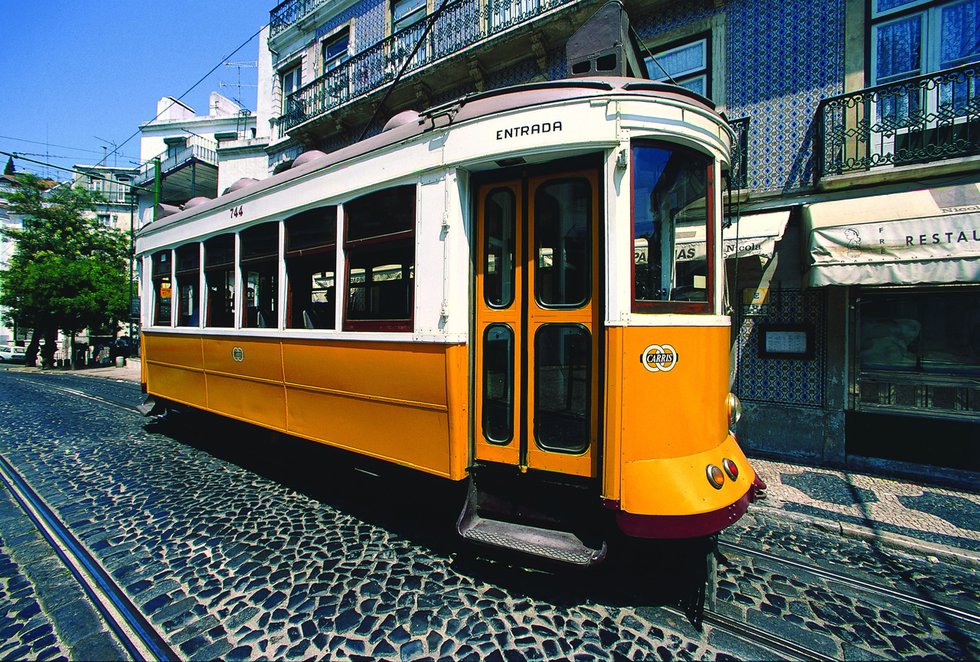
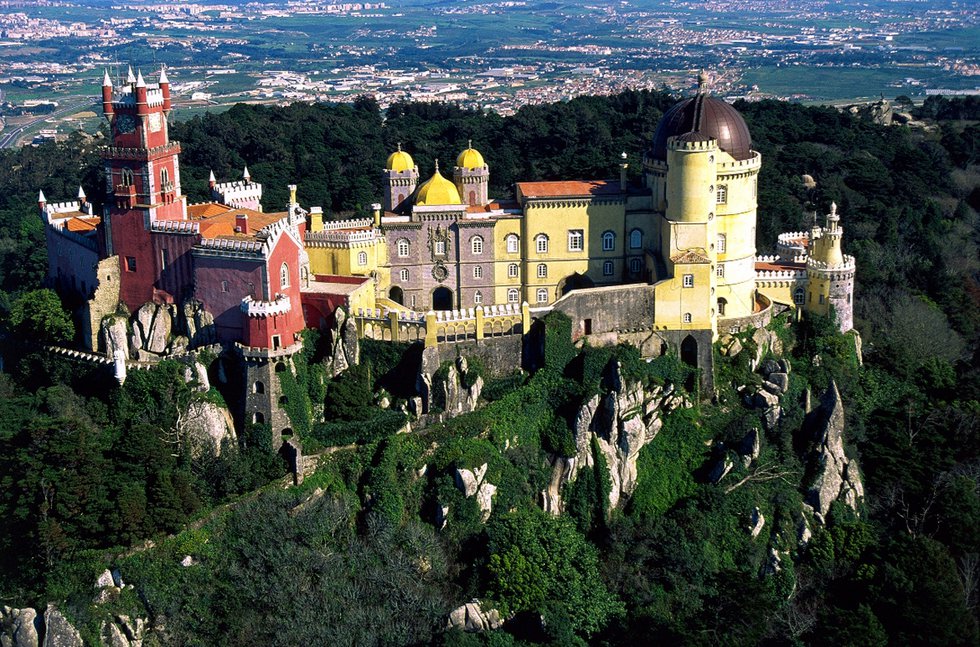



Cocktails on windy rooftops with dreamy views of the Spanish tile roofs that blanket the city’s seven hills. Cobblestone streets and sidewalks worn slick from centuries of foot traffic. Weather-worn patterned tiles clinging to pastel building façades. Much of Lisbon is preserved in time from its years of fascist rule and the austerity of the not-too-distant past.
But there are signs of change here, too. Cranes punctuate the skyline, and colorful murals and graffiti tags telegraph a creative energy that is bubbling up throughout this ancient city. Lisbon teeters on the edge of old and new.
Throughout our travels in Portugal, around Lisbon and down the western coast to the rocky Algarve region along the southern coast, the refrain we heard from Lisboans was surprisingly similar. They spoke about hard choices, learning to be content with less, strong familial bonds, gratitude and hopefulness. We’d later learn that adaptability and resourcefulness are baked into the Portuguese culture all the way back to Henry the Navigator who launched the country’s Age of Discovery in the 15th century.
My husband and I found ourselves in this country hemming the western border of Spain late last summer in search of a less-discovered European culture. We also wanted to experience a dichotomy of design styles—we weren’t disappointed, finding that the iconic azulejo ceramic tiles of Portugal’s past pair well with a strong modern sensibility. Architects in recent years have peppered Portugal with much-lauded modern structures, including Lisbon’s new MAAT museum of art, architecture and technology, designed by London architecture firm AL_A and winner for Best Architecture at the 2017 Leading Culture Destination of the Year Awards, among many others. There is a spark of modernity and youthful creative energy here that I have found lacking in some fusty European cultures. Portugal feels fresh, inspired—and empowered.








Seventy-plus years of dismal economic outlook, starting with the fascist regime of António Salazar in the 1930s and continuing through 23 subsequent governments, forced many young Portuguese to look elsewhere for work. Generations had to move far from home and family, or stay and settle for less—of everything. But today, after years away, many Portuguese, seeing new opportunity, are coming back.
One afternoon, from one of the city’s lovely miradouro—scenic overlook plazas where you might find a guitarist playing Lisbon’s soulful fado music and a stand selling sangria—we counted seven cranes in the sky.
Lately Lisbon has been promoting its tech scene. In 2016 and 2017, the city hosted the world’s biggest tech conference, Web Summit, and will again in 2018. With superior Wi-Fi, multi-lingual natives and relatively low rent compared with the rest of Europe (and other tech hot spots like London, Berlin and Stockholm), it’s becoming attractive for tech startups, and increasingly appealing for young Portuguese to stay, or return, for work.
We took a Jeep tour through the street art and history of Lisbon with Daniel Coelho, a Lisboan who did just that. A graphic designer by trade, Coelho worked across Europe and Asia for brands like Swatch before returning to Lisbon to start his Bike My Side business, which takes visitors on tours of the city via motorcycle sidecar or Jeep. He told us: “In 2010, after two years in Hong Kong, I realized that I didn’t want to spend all my life behind the screen of a computer. I wanted to be out, meeting people, talking, sharing experiences … Portugal was also in the deepest crisis. But I’m a positive thinker. In my head a crisis is like a flood on a river, it cleans the dead wood.”

Coelho shared the cautious optimism we found among most locals determining their own destiny by starting businesses at home: “After talking with some friends I decided to come back. When no one was betting on tourism, I started my company. It wasn’t easy at first, but step-by-step I created my own niche of market.”
As you’d expect from a city with a 3,200-year history, there are several important and stunning historic sites to see—particularly the gothic Jerónimos Monastery and nearby medieval Tower of Belém (both UNESCO World Heritage Sites), and the hilltop Moorish São Jorge Castle and its walled old town overlooking the Tagus River. There, we had our best lunch—sardines and a baguette with a bottle of wine—eating as we gazed out over the city and the 25 Abril Bridge, whose name commemorates the non-violent 1974 coup that overthrew Portugal’s authoritarian regime for good. Lisbon’s comparisons to San Francisco are obvious not only because of this red, Golden Gate-like bridge, but also the 1930s streetcars that charmingly roll tourists up its eight hills.
One busy Thursday night, we had the good fortune of walking into Bairro do Avillez, one of the city’s hottest restaurants owned by famous Lisbon chef José Avillez, and getting a table. We sampled his signature “exploding” olives and an inventive seafood mash-up of squid-ink and curried rice. Maybe it was a fluke, but that kind of ease seemed to follow us wherever we went.
Another of the spots foodies get excited about is the Time Out Market, a food hall curated by editors of the magazine, set in an 1882 market building. Inside, we bought sardines from Conserveira de Lisboa and looked at Portuguese-made goods like the incredible Claus Porto soaps (and their colorful patterned packaging). We casually asked the clerk if he knew of a rooftop bar we might get a drink and he happily obliged. Following his loose directions we wandered up narrow residential cobblestone roads until we heard music wafting through the air. What looked like a historic townhouse, turned out to be Madame Petisca—a restaurant and bar with sweeping views, a deejay playing soul tunes and a sunset we’ll never forget.








Our hotel was located, incredibly, in the Praça do Comércio, the main, municipal square along the Tagus River waterfront surrounded on three sides by grand, yellow, portico-fronted buildings. Under one such stone arch was the former government office building that housed Salazar’s office, but is now the Pestana Pousada de Lisboa hotel, run by the Portuguese-owned Pestana Group, which turns historic buildings into hotels all over the country. Since this was an office building, some creative repurposing had to be done, like the addition of a glass-box bathroom in our room, which was innovative, but not for the bashful.
At Rossio Station, a late-gothic style gem of a building in the center of the city, we were greeted in English by an attendant in a polo shirt who offered to assist us with the ticket machine. Never have I had such a lovely time getting a train ticket. We were departing for the 40-minute day-trip to Sintra, the magical, hilltop town sprinkled with palaces (one of which is currently being renovated by Madonna).
There, during a long lunch at the terrace restaurant of the hotel Tivoli Palacio de Seteais, we witnessed a chic Portuguese family gathered for a christening, sweet kids dressed in linen playing along the gravel walkways. Others swam in the gorgeous pool with views up to Sintra’s fairytale Pena Palace, which is the town’s crown jewel and the reason most visit.
We passed on a hike along the narrow, winding road up the mountain, and have a few regrets about that, but the pleasure of sitting under the striped awning overlooking the lovely slip of canyon was hard to abandon. The lovely, 18th century inn is filled with antiques—even a piano original to the palace—and would have been worthy of an overnight stay (and for some R&R in the new Anantara spa), but we had foolishly bought into the hype of Sintra as only a day trip. The hotel offers carriage rides through town, along the roads where visitors to the castle will snap photos wondering if you’re a YouTube star or Madonna herself.
Lisbon could easily intrigue anyone for a week, but we had more to explore. Farther down the coast we discovered tiny beach communities with parking lots of campers and surfers bobbing on waves. We learned that surfers make pilgrimages to Portugal because the steep ocean drop off can make for waves as high as 78 feet. Driving down the coast we couldn’t believe the incredible beauty of the misty morning burning off over these magical coves with just a handful of bathers.
Just 40 minutes from Lisbon, we discovered the stylish town of Comporta, a popular destination for the fashion set. This quiet former fishing village is home to Sublime Comporta, a sexy and somehow also kid-friendly 34-room resort located on 17 acres of manicured pine, cork and olive groves. Christian Louboutin and Italian actress Monica Bellucci have added their endorsement by purchasing homes down the road.




The Algarve, along Portugal’s southern coast, is peppered with dramatic, steep, rocky coves that easily compete with the Amalfi Coast for spectacle, though it has already been discovered by swarms of Brits who flock to condos and space-ship-sized hotels, rooms for let, and everything in-between. The limestone cliffs are unbelievable; one grotto had a café tucked into its rocky pocket along crashing waves.
Here, bars were advertising soccer matches and happy hours. Despite the many tourists in Lisbon, that city had maintained its identity, but the Algarve seems to have surrendered the flag. Yet, oh … those amazing cliffs. And even with a dominating tourist presence, there were still memorable moments and experiences worth having.
The cliff walk from Algar Seco to the Carvoeiro Caves had no railing, or clear path except one worn through the succulents. A guitar player strumming to the crashing waves was a perfect coda for the trip. And one of the many memories luring us for a return visit.
This article originally appeared in our August 2018 issue.








